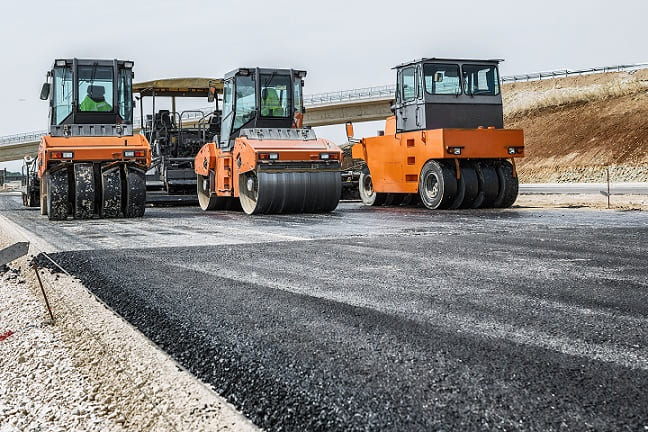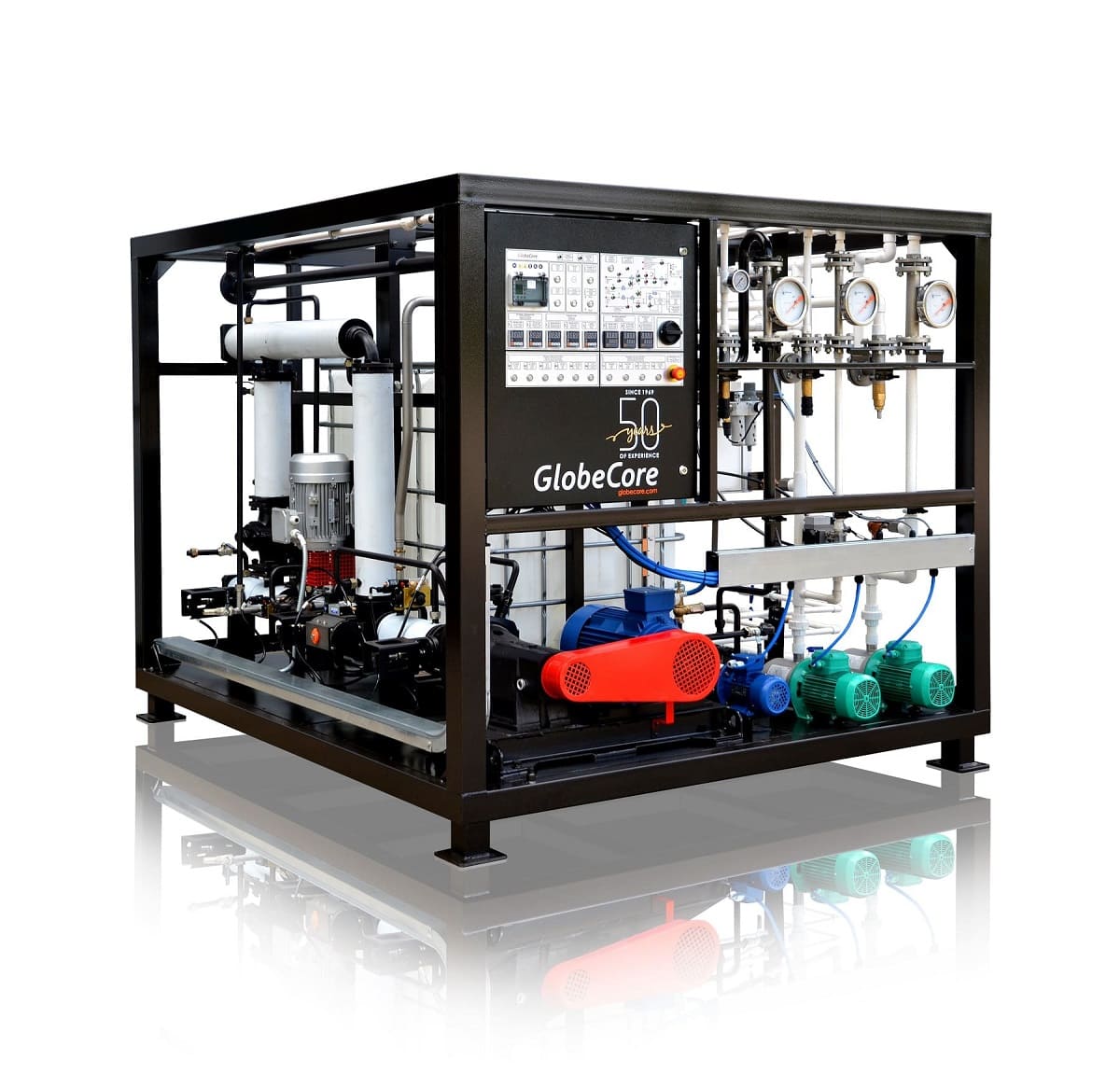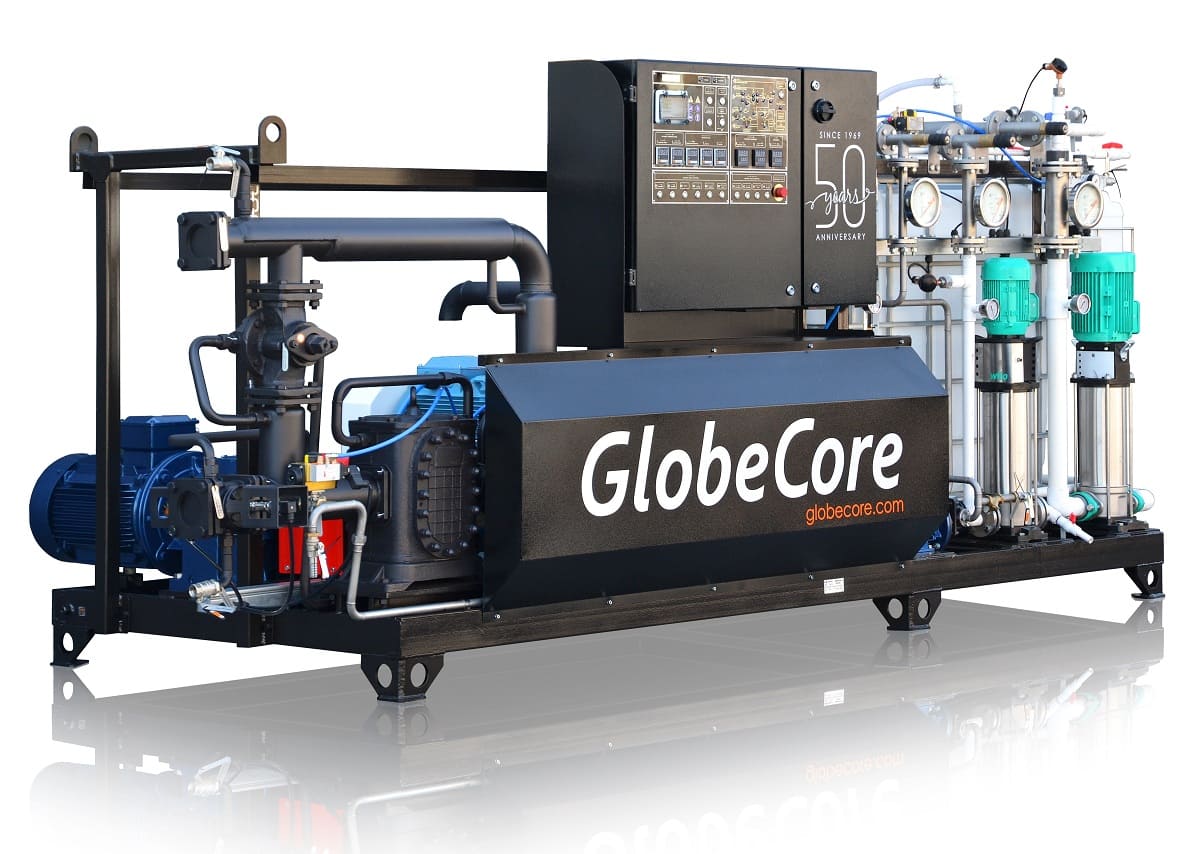The function of bitumen emulsion is to form uninterrupted film of bitumen after breaking. The rate of this process depends on the reactive ability of the emulsion and the stone surface, as well as weather conditions, such as temperature and humidity. Bitumen emulsion are classified according to their reactive ability.
Fast breaking emulsion separate immediately on contact with clean stone material with small mean surface area (such as ballast when performing surface treatment).
Medium breaking emulsions separate when mixed with stone materials with small mean surface area. Such emulsions are used in production of black crushed stone or porous organic mineral mixes.
Slow breaking emulsion break when mixed with mineral material with high mean surface area (such as mixes of dense granule content). Some countries classified these emulsions as super stable. They are used in the production of cold asphalt mix, emulsion-mineral mixes etc.
The type of emulsion depends the type and concentration of the surfactant, selected acid (or another method of pH adjustment) and its concentration, as well as the type and origin of bitumen.
Stone materials have a certain surface charge (which depends on pH of the water phase and the natural properties of the mineral). The surface of the so called acidic minerals with high content of silica oxide is negatively charged. The surface of basic minerals (such as limestone) is positively charged. Raising the pH of the medium where the mineral is located, causes the mineral surface to increase the negative change, while the presence of calcium salts and other cations leads to reduction of the negative charge on the surface.
Cationic emulsion react with the stone material faster if the surface is mostly negatively charged (granite, quartzite etc), although other factors may also be important.
It should be noted that emulsion breaking is a complex process that requires more research.
Some of the stages of emulsion breaking may be accompanied by the following:
1) Adsorption of the emulsifier on the surface of the mineral. Free ions or emulsifier molecules are adsorbed by the surface quite rapidly. The surfactant form the bitumen-water phase boundary is “absorbed” much more slowly. The removal of the stabilizing surfactant makes the emulsion less stable, but it also reduces (or even reverses) the surface change of the stone surface, which may slow down the emulsion breaking process.
2) Motion of the bitumen particles of the emulsion towards the stone surface. The bitumen particles are charged and are attracted to the mineral surface of the opposite charge. Surface adsorption ensures close contact of the particles, leading to flocculation, coalescing and coating of the surface.
3) Changing of pH. Some minerals, such as limestone (or fillers like cement) can neutralize acids, increasing pH and destabilizing the emulsion. In other cases, the mineral may absorb hydrogen ions, increasing pH less drastically, but still sufficiently to destabilize the emulsion. Limestone, for instance, may supply calcium or magnesium ions into the solution, which also neutralize the charge in anionic emulsions.
4) Water evaporation. As the water evaporates from the mix, bitumen particles come into contact, coalescing into larger droplets. Water evaporation can be the main cause of super stable emulsion breaking.


 USB-2 Bitumen emulsion ...
USB-2 Bitumen emulsion ... USB-2 Bitumen emulsion ...
USB-2 Bitumen emulsion ...